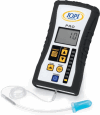Post-Radiotherapy Dysphagia in Head and Neck Cancer: Current Management by Speech-Language Pathologists
- PMID: 38691257
- PMCID: PMC11222272
- DOI: 10.1007/s11864-024-01198-0
Post-Radiotherapy Dysphagia in Head and Neck Cancer: Current Management by Speech-Language Pathologists
Abstract
Dysphagia, difficulty in eating and drinking, remains the most common side effect of radiotherapy treatment for head and neck cancer (HNC) with devastating consequences for function and quality of life (QOL). Over the past decade, 5-year survival has improved due to multiple factors including treatment advances, reduction in smoking, introduction of the human papillomavirus (HPV) vaccine and more favourable prognosis of HPV-related cancers. Increased prevalence of HPV-positive disease, which tends to affect younger individuals, has led to an elevated number of people living for longer with the sequelae of cancer and its treatment. Symptoms are compounded by late effects of radiotherapy which may lead to worsening of dysphagia for some long-term survivors or new-onset dysphagia for others. Speech-language pathology (SLP) input remains core to the assessment and management of dysphagia following HNC treatment. In this article, we present current SLP management of dysphagia post-radiotherapy. We discuss conventional treatment approaches, the emergence of therapy adjuncts and current service delivery models. The impact of adherence on therapy outcomes is highlighted. Despite treatment advancements, patients continue to present with dysphagia which is resistant to existing intervention approaches. There is wide variation in treatment programmes, with a paucity of evidence to support optimal type, timing and intensity of treatment. We discuss the need for further research, including exploration of the impact of radiotherapy on the central nervous system (CNS), the link between sarcopenia and radiotherapy-induced dysphagia and the benefits of visual biofeedback in rehabilitation.
Keywords: Dysphagia; Head and neck cancer; Late-effects dysphagia; Radiotherapy; Speech-language pathology; Swallow rehabilitation.
© 2024. The Author(s).
Conflict of interest statement
The authors declare no competing interests.
Figures
References
References and Recommended Reading
Papers of particular interest, published recently, have been highlighted as: • Of importance
Publication types
MeSH terms
LinkOut - more resources
Full Text Sources
Medical
Miscellaneous


